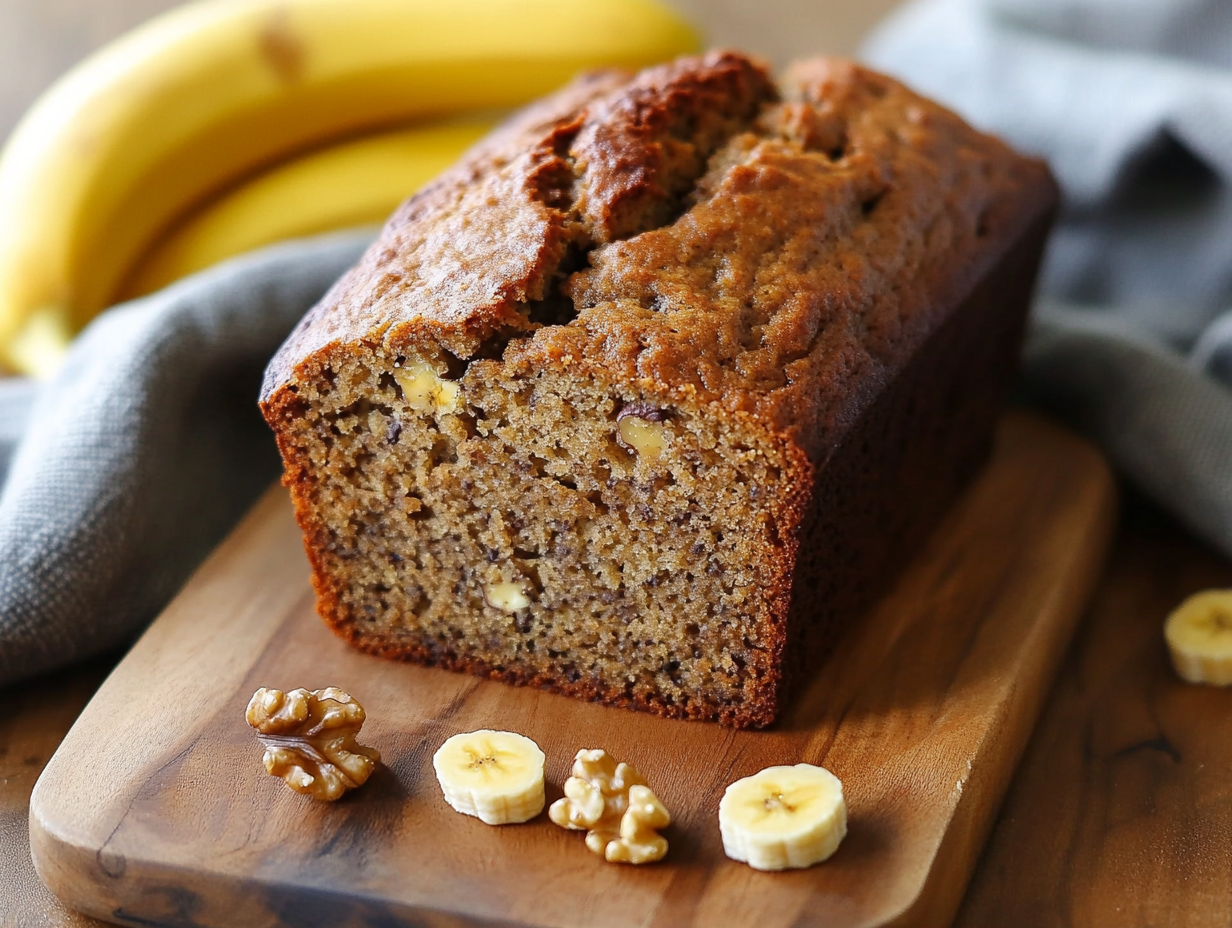Baking gluten-free banana bread can sometimes feel like an uphill battle, especially when you encounter the frustrating issue of it not rising. Understanding the reasons behind your gluten-free banana bread rise can help you achieve a moist, fluffy loaf. In this article, we’ll explore the science behind rising in banana bread, common mistakes to avoid, and troubleshooting tips to ensure your gluten-free baking is successful.
One key element in gluten-free baking is the use of appropriate leavening agents, such as baking soda and baking powder. These ingredients are crucial for creating the air bubbles that help your bread rise. When baking gluten-free banana bread, you can learn more about the common issues that prevent it from rising in this guide from The Dough Academy.
Table of contents
- Understanding the Science Behind the Gluten Free Banana Bread Rise
- Common Reasons for Gluten Free Banana Bread Not Rising
- Troubleshooting Tips for Gluten Free Banana Bread Rising Issues
- Using Binders for Better Structure
- Alternatives to Traditional Ingredients
- FAQs About Gluten-Free Banana Bread Not Rising
- Conclusion
Understanding the Science Behind the Gluten Free Banana Bread Rise
How Does Banana Bread Rise?
In traditional baking, gluten plays a significant role in giving structure and support to baked goods. However, baking relies on different techniques and ingredients:
- Leavening Agents: Baking powder and baking soda are essential for creating the rise. Baking powder contains both an acid and a base, which react when wet and heated to produce carbon dioxide, helping the bread rise Baking Kneads, LLC, The Dough Academy.
- Mixing Techniques: The way you mix your ingredients can also affect the bread’s rise. Overmixing can lead to a dense loaf, while undermixing may result in uneven texture The Dough Academy.
What Happens in Gluten-Free Baking?
Gluten-free banana bread often requires more attention to detail compared to its gluten-containing counterparts. Gluten-free flours absorb liquids differently, which can impact the rise. Additionally, you can find useful insights on this topic in the Ultimate Gluten Free Bread Troubleshooting Guide.
Common Reasons for Gluten Free Banana Bread Not Rising
Several factors can lead to your gluten-free banana bread not rising properly. Understanding these common issues can help you troubleshoot effectively.
Lack of Leavening Agents
- Skipping Baking Powder or Soda: If you forget to add these essential ingredients, your bread won’t rise Fearless Dining, Zest for Baking.
- Expired Leavening Agents: Baking soda and baking powder can lose their effectiveness over time. Always check expiration dates before use.
Incorrect Oven Temperature
- Too Hot or Too Cold: Baking at the wrong temperature can hinder the rise. Ensure your oven is preheated to the correct temperature, typically around 350°F (175°C)Baking Kneads, LLC, Zest for Baking.
Inaccurate Ingredient Measurements Impacting Gluten Free Banana Bread Rise
- Overpacking Flour: Measuring flour inaccurately can lead to a dense batter. Use the spoon-and-level method, or weigh your ingredients for accuracy. To ensure you’re starting with the right recipe, check out our Gluten-Free Banana Bread Recipe for a delicious base The Dough Academy, Fearless Dining.
Too Much Liquid
- Liquid-to-Flour Ratio: A high liquid content can result in a gloopy batter that doesn’t rise. Adjust the liquid according to your recipe’s guidelines, The Dough Academy.
Insufficient Mixing Technique
- Overmixing: Unlike traditional bread, gluten-free dough doesn’t require extensive mixing. Overmixing can lead to a dense texture, The Dough Academy.
Troubleshooting Tips for Gluten Free Banana Bread Rising Issues
Here are some actionable tips to ensure your gluten-free banana bread rises properly:
- Adjust Leavening Agents: If your bread is consistently flat, consider increasing the amount of baking powder or soda Zest for Baking.
- Check Oven Calibration: Use an oven thermometer to ensure accurate temperature readings. Baking in the center of the oven helps achieve an even rise Baking Kneads, LLC, The Dough Academy.
- Experiment with Flour Types: Different gluten-free flour blends have varying absorption rates. Some blends may work better than others for achieving the desired rise Fearless Dining, Zest for Baking.
Using Binders for Better Structure
Importance of Binders in Gluten-Free Baking
Binders such as xanthan gum, psyllium husk, or guar gum help hold the bread together in the absence of gluten. These ingredients provide structure and improve the rise:
- Xanthan Gum: A common gluten substitute that helps stabilize the dough Zest for Baking.
- Psyllium Husk: This can be a great alternative for added moisture and elasticityFearless Dining.
Alternatives to Traditional Ingredients
Using Eggs for Structure and Moisture
Eggs can enhance the rise and texture of your gluten-free banana bread. They act as binders and contribute to moisture, making the final product fluffier The Dough Academy, Fearless Dining.
Dairy and Non-Dairy Substitutes
Experimenting with various liquids can also influence the rise. Options like almond milk, coconut milk, or yogurt can add moisture without affecting the rise negatively.
FAQs About Gluten-Free Banana Bread Not Rising
- Why did my gluten-free banana bread collapse?
If your bread collapses, it might have too much liquid or you over-proofed it The Dough Academy, Zest for Baking. - How long should I bake gluten-free banana bread?
Generally, bake for 50–65 minutes or until golden brown and a toothpick comes out clean, Fearless Dining. - Can I use almond flour for banana bread?
Yes, almond flour can be used, but you may need to adjust the liquid ratios Zest for Baking.
Conclusion
Understanding the intricacies of gluten-free baking can significantly enhance your experience and outcomes. By being mindful of the ingredients and techniques, you can enjoy delicious, well-risen gluten-free banana bread. Happy baking!
For more tips and tricks on gluten-free baking, check out this Zest for Baking guide for valuable insights.

